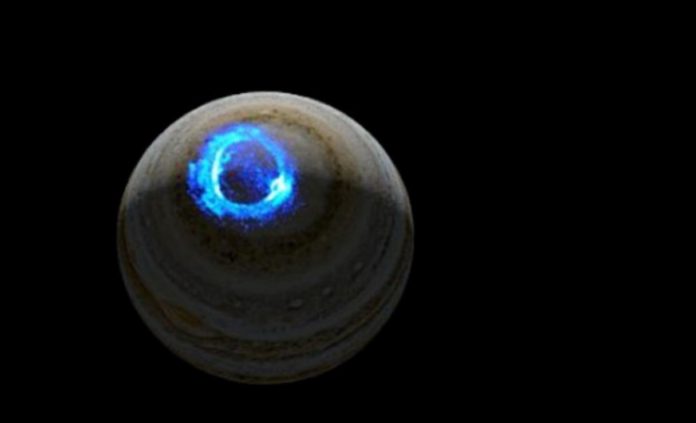With the help of the Juno station, for the first time, it was possible to see the birth of mysterious dawn storms at the poles of the gas giant.
The interplanetary station Juno recorded a polar light storm for the first time in Jupiter’s atmosphere. This phenomenon occurs at both poles of the planet and was previously very limitedly observed only by ground-based and near-earth observatories.
- Does This Mean We Stopped Being Animal and Started Being Human Due to ‘Copy Paste’ Errors?
- The One Lifestyle Choice That Could Reduce Your Heart Disease Risk By More Than 22%
- Aging: This Is What Happens Inside Your Body Right After Exercise
- Immune-Boosting Drink that Mimics Fasting to Reduce Fat – Scientists ‘Were Surprised’ By New Findings
- Gun Violence in America: What They Don’t Talk About at the Debate
Jupiter has the most powerful auroras in the solar system, but they can only be seen in the ultraviolet spectrum.
The gas giant’s auroras are created by a steady stream of high-energy electrons, mostly from the atmosphere of Io’s moon. They accelerate along the lines of force of the magnetic field towards the poles of Jupiter, where they fall into the upper atmosphere and interact with gases, creating a powerful glow.
Particularly spectacular are the dawn light storms on Jupiter, during which there is an intense increase in brightness and expansion of the aurora at the planet’s poles.
However, such storms, first detected by the Hubble Telescope in 1994, originate on the night side of Jupiter, and only lateral views of the phenomenon could be observed from Earth.
With the help of the Juno station, it was possible to understand what is happening on the night side of Jupiter and to see the phenomenon “whole”.
As the planet rotates, the approaching dawn storm moves with it to the day side, where the auroras emit hundreds to thousands of gigawatts of light.
This is at least ten times the energy that ordinary Jupiter auroras create.
After tracing the sequence of the gas giant’s dawn storms, scientists have concluded that they are very similar to a type of terrestrial aurora called substorms.
Substorms arise as a result of short-term disturbances in the Earth’s magnetosphere, during which energy is released into the planet’s ionosphere.
- Does This Mean We Stopped Being Animal and Started Being Human Due to ‘Copy Paste’ Errors?
- The One Lifestyle Choice That Could Reduce Your Heart Disease Risk By More Than 22%
- Aging: This Is What Happens Inside Your Body Right After Exercise
- Immune-Boosting Drink that Mimics Fasting to Reduce Fat – Scientists ‘Were Surprised’ By New Findings
- Gun Violence in America: What They Don’t Talk About at the Debate
The similarities between substorms on Earth and Jupiter are surprising, because the magnetospheres of the planets are radically different.
These new discoveries will allow astrophysicists to continue studying the auroras both inside our solar system and beyond.
